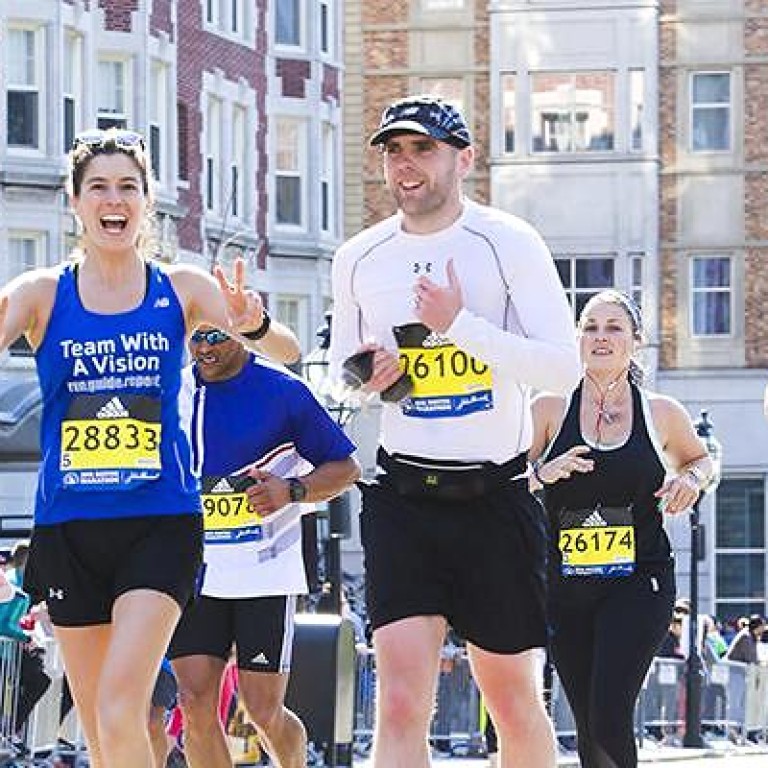
Blind man runs a 250-kilometer ultra-marathon with the help of an app
App is 'like a cross between satellite navigation and the reversing sensors in your car,' says Simon Wheatcroft, who just began a six-day trek across a Namibian desert
Simon Wheatcroft is completely blind. But that's not going to stop him running a 250 kilometer (155.3 mile) race in the desert.
The British runner started off the feat on Monday. It consists of a number of long distance runs happening over six days in a desert in Namibia.
"I decided I wanted to run, I decided myself one day thinking I really wanted to go out there and push the boundaries of what was possible," Wheatcroft says.
To help him compete in the "ultra-marathon", Wheatcroft partnered with IBM to build an app that would be able to help him navigate situations.
The app is called eAscot – after the name of Wheatcroft's guide dog – and uses coordinates to plot a route. Wheatcroft recently ran the Boston Marathon for which IBM programmed the route. When Simon veered too far left or right from the straight path, the smartphone app would making a beeping noise in his headphones, and alert him to get back on track.
"(It's) Like a cross between satellite navigation and the reversing sensors in your car. So if Simon is too far left from where he is going it beeps and if he is too far right it beeps with a different pitch," according to Holly Cummins, technical lead at IBM's Bluemix Garage.
Bluemix Garage is IBM's new working space in London where developers build applications on top of the technology giant's cloud app development platform which is called Bluemix.
The data collected by the app can be collected by IBM, analysed and fed back to Wheatcroft after the run.
When he first started running, Wheatcroft trained by running between soccer goalposts as these were straight lines. He then moved onto the open road where he used grates on the pavement and lines on the road to navigate.
Speaking ahead of the ultra-marathon, Wheatcroft wasn't concerned about the distance, but rather the extreme conditions.
"The important thing to get correct in the desert is more related to hydration and food. If you become dehydrated you are losing electrolytes, that's very dangerous in the desert. For me, the technology has solved the navigation point…that's done…so now it's a case of putting all the other pieces together and making sure we get across the desert," Wheatcroft said.

